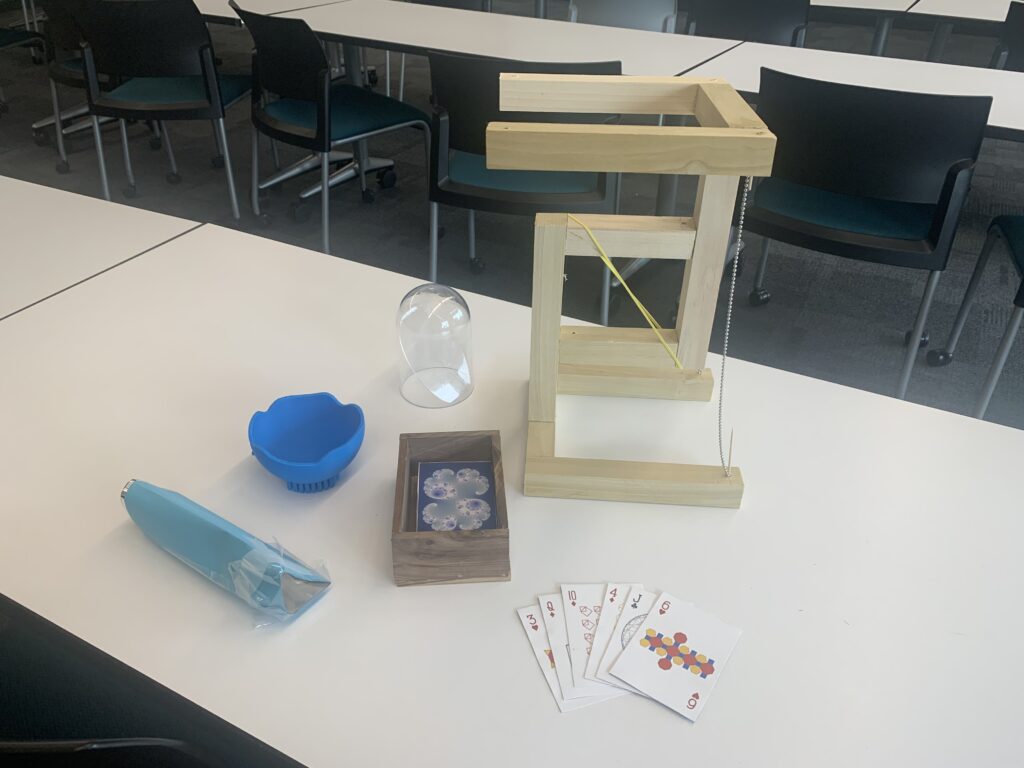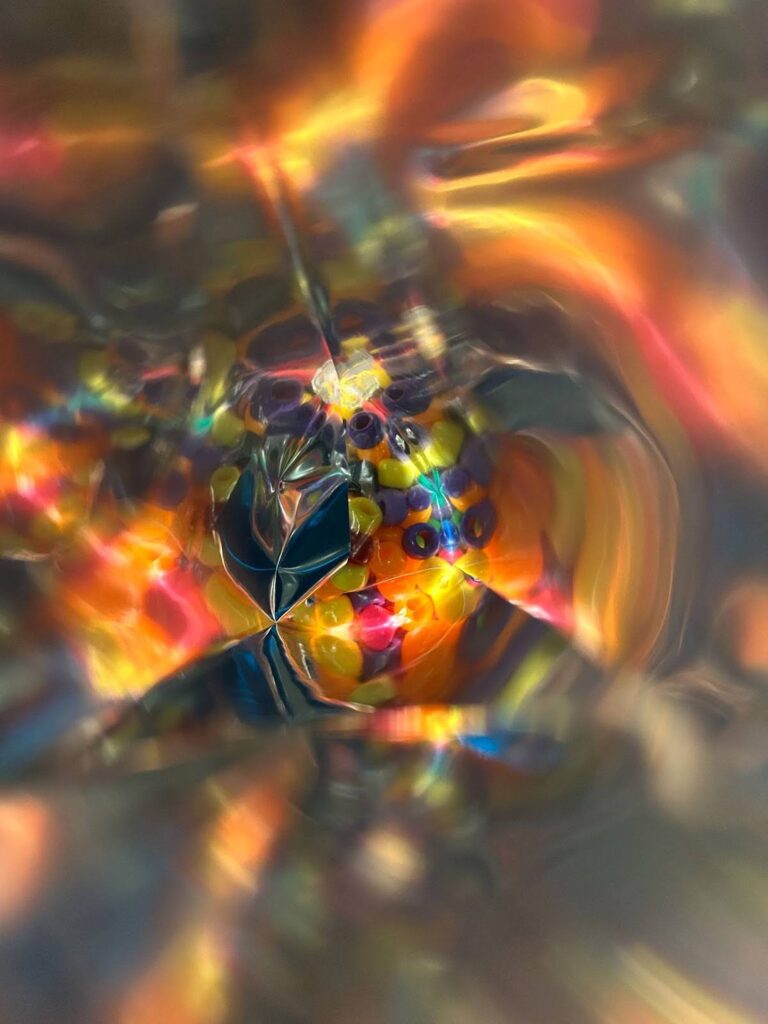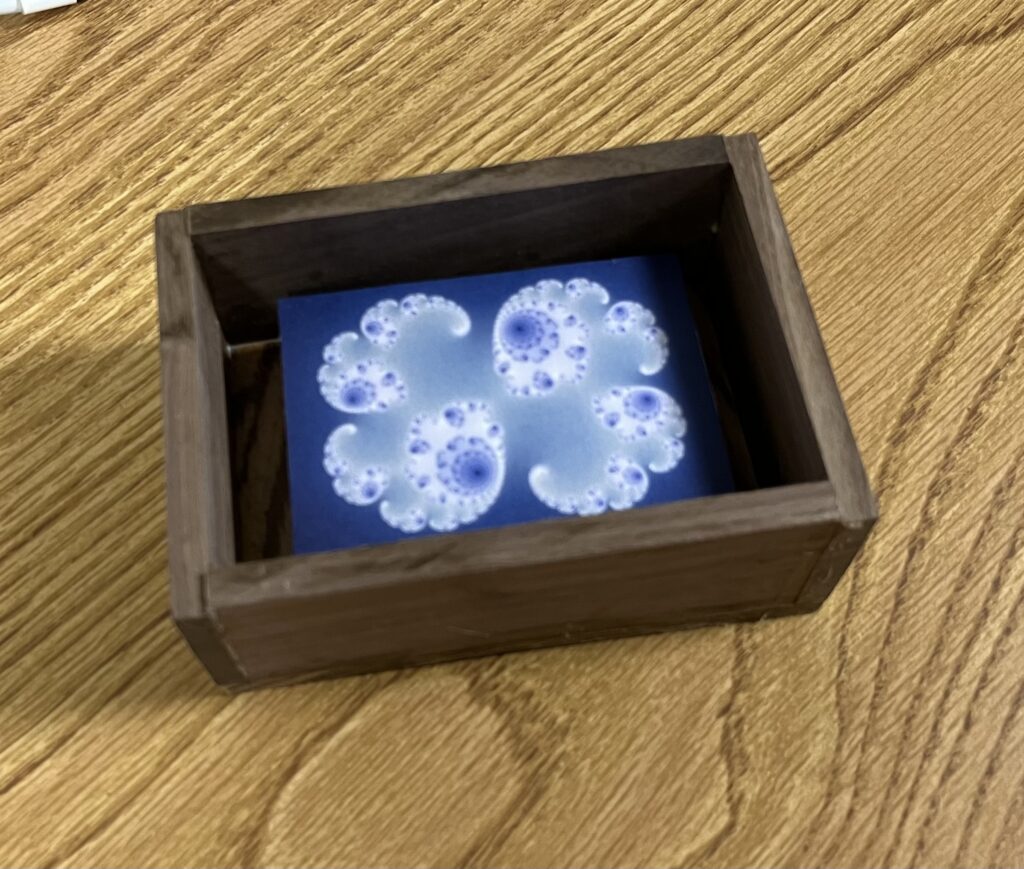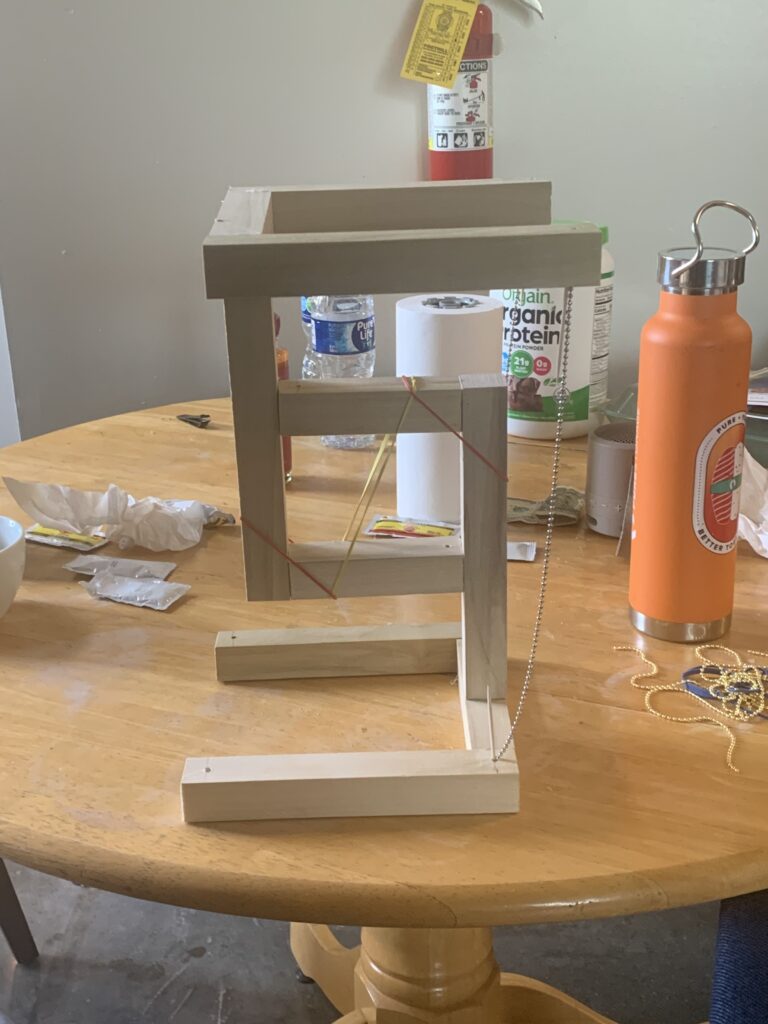
I had a great time in Math189AE this semester! I’ve learned a lot about math and making, both of which I’ll talk more about in the rest of this blog.
The class was centered around five main projects, two of which are short one-week endeavors, one of which is a medium two-week endeavor, and two of which are longer three-week endeavors. I tried to use a new material/machine for each project.
Project 0A: Stereographic Sphere

The first short project was a stereographic sphere – an object that projects a shape when you shine a light on top of it. Basically, we used trigonometry to map every point on the plane to the sphere by finding the intersection between the sphere and the line from the plane to the point light. We used Blender to create the STL file for this sphere and a 3D printer to actually print it. This was my first time using either of these technologies, so I learned a lot while doing this project. Also, we ended up with a Blender file which can generate any such sphere for any image. Above is one of the spheres I printed that casts an among us crewmate shadow.
Project 0B: Mirror Reflection Prism

The second short project was a kaleidoscope made from reflective paper. I learned about reflections and symmetry groups in this project, as the light bounces off the walls of the kaleidoscope in various ways. This was my first time using reflective paper, and I suspect it won’t be the last. The paper is very useful, kind of like a foldable mirror. Above is a view of the kaleidoscope when looing at a bunch of multicolored beads.
Project 1: Math Card Deck

The third project (and first long project) is a mathematical deck of cards. I’ve wanted to make a custom deck of cards since last school year, so this project was very near and dear to me. I used Inkscape, an SVG editing software, to design the card fronts and backs, and followed an online tutorial on how to print the physical cards. Each suit of the deck is a different set of 13 mathematical objects, and I learned about various recreational math topics, such as Archimedean solids. The joker cards and card backs are various fractals and tilings. I also used a bandsaw, tablesaw, and wood glue to make a carrying box for the cards. This was my first time using the woodshop and using all these tools, so the box was perhaps my favorite part of this project. Above is the deck of cards in the wooden box.
Project 2: Tensegrity Tower

The fourth (and second long) project was a tensegrity structure. Prof. Kagey mentioned it at the beginning of the course, and my project partner and I wanted to replicate it. Originally, we tried to follow an online tutorial to make a small version, but it didn’t really work since it balanced oddly. I learned a lot about the physics behind the structure, and the math behind it as well. For the bigger project, we used the woodshop (and the bandsaw) to cut pieces of wood into the proper shape. We then used chains and a rubber band to put the pieces together. Above is a picture of the final result.
Project 3: Pepper’s Ghost Dome

The final (and medium) project is a Pepper’s ghost illusion. This is another project I’ve been wanting to do for a while now, so I was really excited. A Pepper’s ghost is an optical illusion where light partially reflects off a transparent surface, seeming like a “ghost” or hologram. I took a cylindrical dome and laser-cut a plexiglass cross-section that acts as the transparent surface. This was my first time using the laser-cutter by myself, and it was much easier than I thought. I will definitely be using it in the future. I used geometry to figure out the dimensions of the plexiglass and Inkscape to make the svg file for the lasercutter. Above is the pepper’s ghost illusion displaying a picture of Trader Joe’s tofu.
Conclusion
Overall, I learned a lot of math concepts across all these projects, from applied math with the optics of stereographic projections and tensegrity to more abstract math in the card suits and creating the pepper’s ghost svg. I also learned how to use Blender, the 3D printer, Inkscape, the table saw, the band saw, wood glue, and the laser cutter. If I had the chance to take this class again and do more projects, I would in a heartbeat. Luckily, I have a year left of college, so I will use my newfound skills in the makerspace to tinker more. I want to do more with the pepper’s ghost (maybe make a hologram watch type thing) and 3D print/woodwork some kind of 3d puzzle. I’m very excited!
Leave a Reply